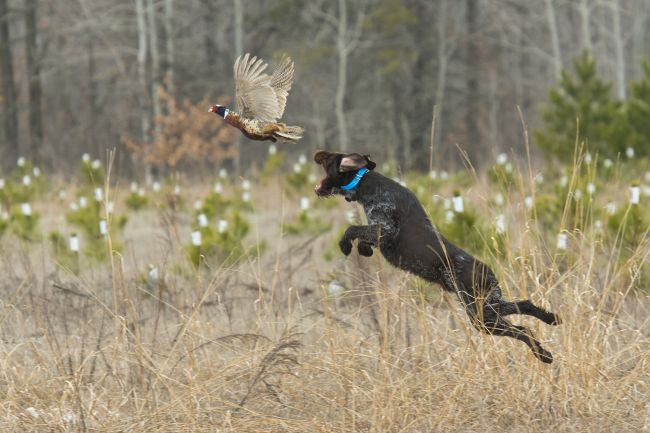
In the field of dog training, Dr. Ian Dunbar first described behavior patterns that often occur in dogs when they interact with smaller creatures as “predatory drift.” Since there have not been any formal studies conducted about predatory drift (and the very term has been disregarded by some), we will hold to it loosely, merely providing details about the concept, should you ever come across this term by dog trainers or doggy daycare providers. Whether or not the term is generally accepted, the behavioral patterns are commonly experienced and pet-owners should be aware of what they mean.
What is Predatory Drift?
Animals are genetically designed to function in certain ways: rabbits burrow, possums play dead to survive, sharks become ravenous at the scent of blood, and nocturnal creatures hunt at night. Similarly, dogs have natural instinct to hunt and kill prey, and this behavior can sometimes manifest in unusual circumstances. Pet owners have experienced owning two dogs, one large and one small, who have played together and lived amicably together for months or even years. Suddenly, dynamics change, and the large dog starts treating the smaller one like a potential meal, chasing after him, holding him in his mouth and shaking him, etc. This is the result of predatory drift, and a dog’s instinct to hunt for prey.
Fortunately, not every dog breed is hard-wired with the same level of prey drive. Some dogs are keen to chase smaller animals (such as herding breeds like Border Collies, Shetland Sheepdogs, and Welsh Corgis, etc), and aside from the occasional corrective nip, will not likely harm or damage the object of prey. Other dogs were bred with the intention of hunting and killing the animal as efficiently as possible. Terrier breeds were bred to be determined “ratters” who would hunt, attack and finish off the rodents with a few swift motions. These kinds of dogs are called “finishers” as they are instinctively inclined to kill the object of their chase. While some dog breeds have a low prey-instinct and others have a higher prey drive, predatory drift is still possible in all canines.
How to Avoid Predatory Drift?
Remember that if your loyal Boxer or Labrador starts showing signs of predatory drift, it is not aggression or a poor reflection on them, but it is merely a natural, instinctive reaction to a smaller animal. To avoid creating problematic dynamics between your pooches consider some of the tips below:
- Recognize triggers: Note the elements that might cause your big dog to associate the smaller dog as prey. This could be anything from running dogs, squealing or crying dogs, injured or weak dogs, struggling/caught dogs, etc.
- Avoid “ganging up” on one dog. Predatory drift can kick into high gear when 2 or 3 dogs pick on, push around, or hassle a smaller dog. Predatory behaviors can escalate quickly, so remove the smaller dog from the situation as soon as possible if he seems ganged-up on.
- Separate small and large dogs in public places (such as the dog park). As often as possible, make sure small and large dogs are playing with pups around their own size. Keep them separate when you are in a public place, as you have no idea what behavioral tendencies the other visiting dogs possess. If your dog goes to doggy daycare, make sure that they organize dog play pens by canine size. That way if you are the proud owner of a big pooch, he won’t be tempted to make a meal of someone’s miniature Pomeranian.
- Plan before you buy. If you are planning on adopting a second dog, consider not only the size and temperament, but also the dog’s gender. These can be important aspects that will discourage other dogs from indulging in their instinctive predatory role.

